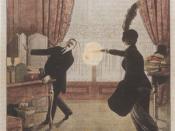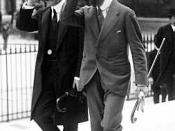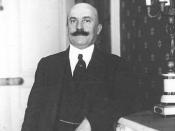The trial of Madame Caillaux and her murder of journalist Henry Calmette symbolized French culture to its core. Edward Berenson combines the trial with French society's attitudes by incorporating courtroom behavior to express Belle Epoque's values and drama to capture the reader's feelings. Although the book is supposed to be about the trial surrounding the murder of Henry Calmette, Berenson primarily uses the courtroom antics of the characters as examples French culture. With each chapter a specific characteristic of French society is explained in detail. However, the main underlying theme of the novel is the importance of gender in Belle Epoque society and how it affected the trial.
Berenson expresses gender in terms of their roles in society during this time period. These roles, consequently, are major factors in the case of surrounding the Madame Caillaux trial. The defense tries to exploit French society's belief in the crime passion.
The prosecution, on the other hand, wants to portray Henriette Caillaux as a woman of masculinity who could not, therefore, commit a crime based on emotion but rather on premeditation.
Berenson adds that because of this obsession with gender roles, men at this time try to prevent the feminist movement from gaining further influence in order to enhance their self-esteem. This obsession with maintaining, or rather rebuilding men's control over women, is brought forth in the trial. For example, Judge Albanel's fixation upon upholding his honor and integrity represents the need for men to assert their masculinity. Not only does Berenson recount the trial behind the murder of Henry Calmette, but he also illustrates Belle Epoque culture in such a way that does not detract from the trial. Even though Berenson shares specifics of French society, these attitudes are represented by the case itself. Therefore, the reasons behind the opinions...


